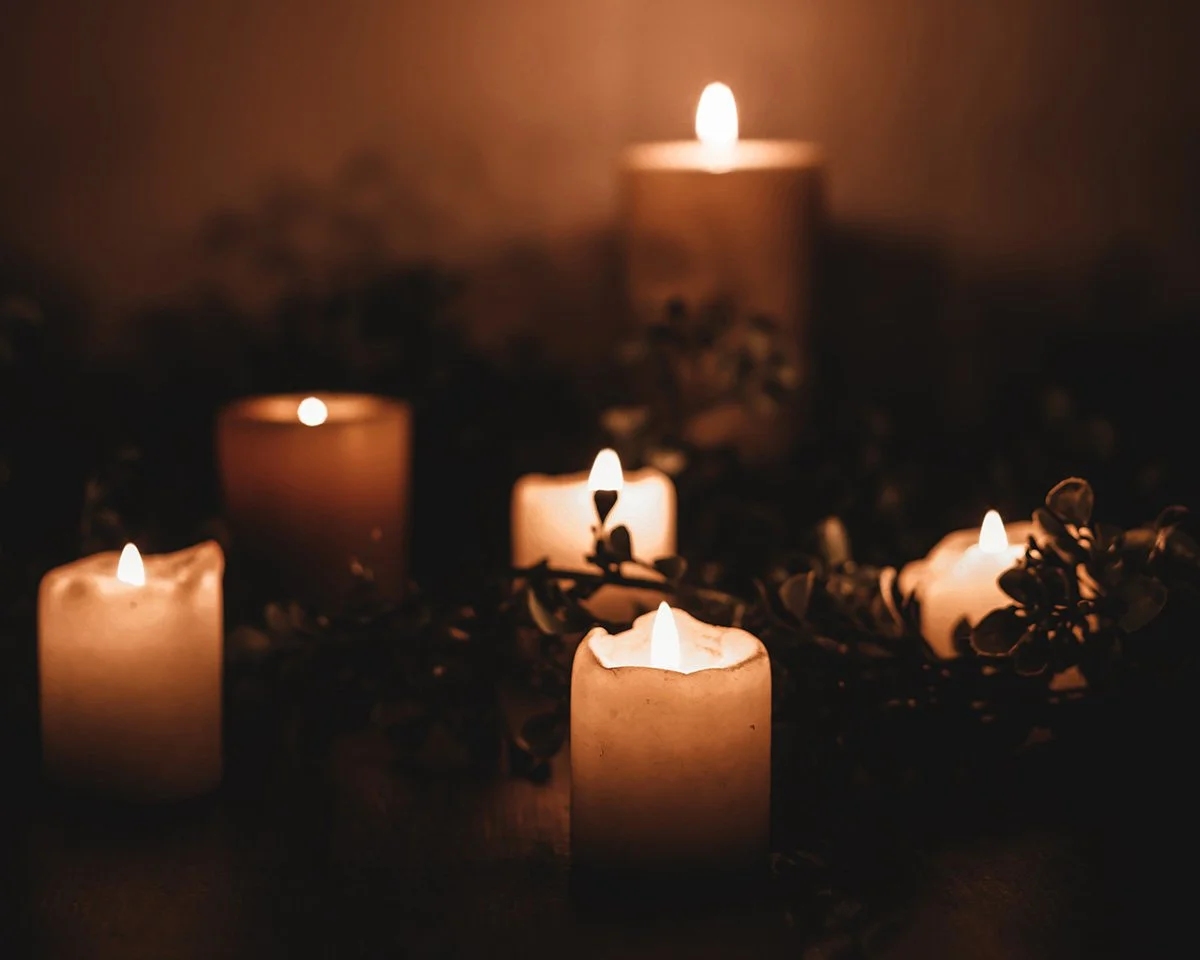Candle Lore from Around the World: Flame as Divination, Prayer, and Spell
Exploring the history of candle magic and candle rituals in folklore and faith
Since the first wick was lit, humanity has turned to flame as a bridge between worlds. Across cultures, candles have served as symbols of the soul, tools for worship, and instruments of magic. A single burning light has long been seen as both a prayer and a spell, a silent messenger carrying intentions into the unseen.
This is the history of candle magic: an ancient and universal language of illumination. From voodoo ceremonies and Catholic altars to hoodoo workings and Buddhist temples, the glow of a candle has guided mystics, healers, and everyday believers through darkness and revelation alike.
The Universal Symbolism of Flame
Before electricity, flame was the center of life. Fire offered protection, warmth, and the ability to see into the dark. Spiritually, it became a metaphor for the divine spark within all beings.
In almost every tradition, flame represents transformation. To burn is to purify. To light a candle is to call upon change. This is why candles appear in both religious devotion and magical spellwork: they embody the meeting point between faith and will.
The History of Candle Magic
The history of candle magic stretches back thousands of years. Ancient Egyptians used oil lamps during rituals to honor deities and guide souls to the afterlife. Romans lit candles as offerings to household spirits, while Greeks burned them for Artemis, goddess of the moon and illumination.
As time went on, candle rituals became deeply woven into folk belief:
The direction of a flame’s flicker foretold omens.
A candle that sputtered meant a spirit’s presence.
The length of a burn revealed how soon a wish would manifest.
Candle magic traveled through centuries and cultures, adapting to local faiths but always holding its place as a bridge between the earthly and the spiritual.
Candle Rituals and Folklore Around the World
Voodoo and Hoodoo Traditions
In both voodoo and hoodoo practices, candles are living conduits of intention. Each color holds meaning: white for purity, red for love, green for success, and black for protection or banishment. Practitioners inscribe names or sigils into the wax and speak prayers as the flame burns, sending the request directly to spirits or ancestors.
In some rituals, multiple candles are arranged in sacred geometry, forming portals for communication between worlds. The way a flame dances or dies becomes a form of divination, revealing whether the spirits have accepted the offering.
Catholic and Folk Christianity
In Catholicism, candles burn before saints’ statues and altars as acts of prayer and remembrance. Each flame is an offering of hope, gratitude, or intercession. Over centuries, folk practices merged with formal worship, blending devotion with magic.
In Mexico and Latin America, veladoras (votive candles) are used for specific petitions—protection, love, or healing—often accompanied by prayers to saints like Santa Muerte or Saint Cyprian. Here, the line between religion and witchcraft blurs into luminous unity.
Eastern Religions and Rituals
In Buddhism, candles are lit alongside incense and flowers as offerings to the Buddha, symbolizing enlightenment and impermanence. The flame reflects the inner light of wisdom. In Hinduism, oil lamps and diyas serve a similar role, representing the triumph of light over darkness and ignorance.
During Diwali, the Festival of Lights, thousands of flames line homes and temples, turning darkness itself into sacred celebration. These rituals show that candlelight—whether a flickering votive or a glowing diya—is a form of prayer written in fire.
European and Appalachian Folk Traditions
In old European folklore, candles were tools for prophecy. A flame’s movement foretold weather, luck, or death. In some Appalachian traditions, a candle placed in a window guided lost souls or travelers home. Witches used candles to trap or summon spirits, crafting charms of wax and wick that blended practical magic with mysticism.
Across the British Isles, candles were once burned on All Hallows’ Eve to keep restless spirits at bay—a custom that evolved into today’s glowing jack-o’-lanterns.
Candle Divination: Reading the Flame
Candle flame reading, or pyromancy, remains one of the oldest forms of divination. Witches and folk magicians interpret a candle’s movement as spiritual communication.
Steady flame: Your intention is aligned; energy flows clearly.
Flickering flame: A spirit or force is nearby, responding to your spell.
Popping or sputtering flame: Resistance, interference, or emotional turbulence.
Flame that dies suddenly: The message has been received—or rejected.
Each burn tells a story, a language of light that reveals more than words ever could.
The Modern Magic of Candle Rituals
Even in the digital age, candle rituals remain deeply rooted in spiritual life. Modern witches, pagans, and lightworkers continue to practice candle magic because it connects intention with physical transformation. Watching wax melt and flame shift is a meditation on impermanence, willpower, and creation.
To create your own ritual:
Choose a candle color that matches your intention.
Carve a sigil or word into the wax.
Dress it with herbs or oils.
Speak your desire aloud and let it burn safely to completion.
In doing so, you join a lineage that stretches across continents and centuries—those who speak to flame and trust it to carry their magic.
Final Reflections
The history of candle magic reveals that flame is more than light; it is language, devotion, and transformation. From voodoo altars to Buddhist temples, from Catholic cathedrals to witchy kitchen tables, candles remain universal symbols of connection between worlds.
The candle rituals and folklore of humanity remind us that wherever there is darkness, we have always answered with flame.

